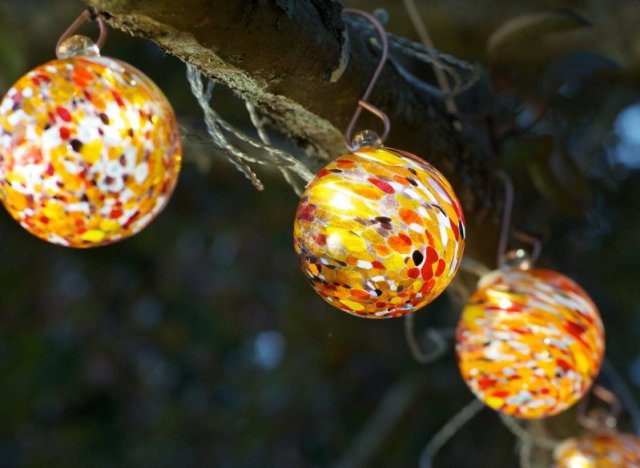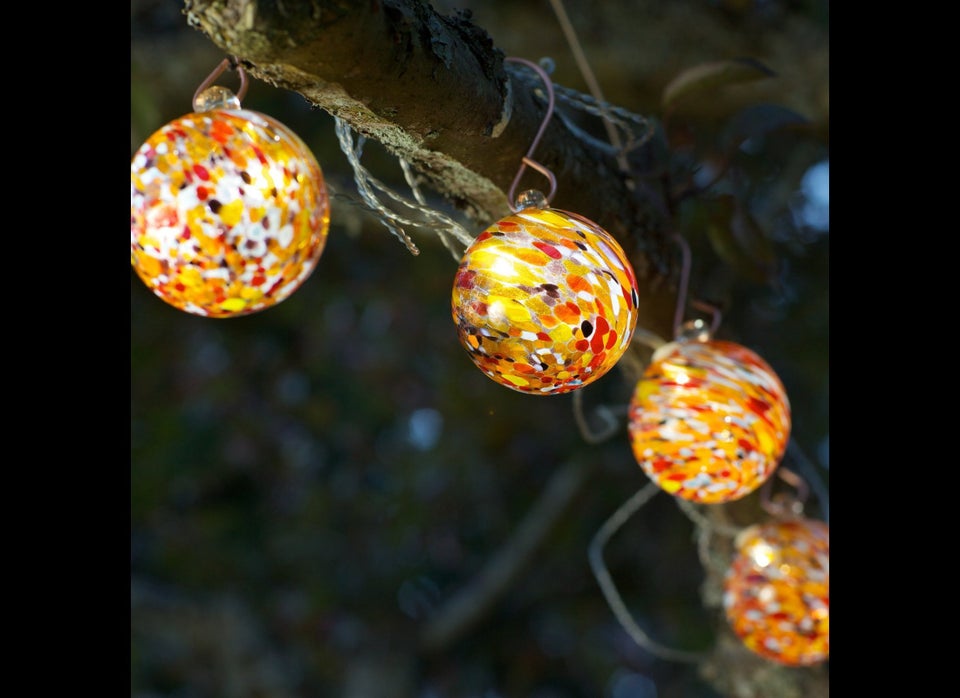
Photo by Solar Light Store
As the days grow noticeably shorter we're turning our attention to outdoor lighting. And we're not talking about hard-to-install electric systems, either. We're going for solar lights, which are easy to set up...and well, easy to forget about, since you don't even have to flip a switch to get them going and they will charge on even cloudy days. Also, they won't increase your electric bill. Need we say more?
If you are thinking about investing in solar lights, here's everything you need to know for shopping...and then getting the most light from your system.
Look for lithium-ion (Li-Ion) or nickel-metal hydride (NiMH) batteries: Li-Ion batteries have the longest lasting battery life, are not affected by extreme temperatures, and are worth the extra cost. However, NiMH batteries are another good choice because they have long lasting lives, are less expensive and have a greater diversity of product styles. A variety of other battery types, from nickel cadmium to lead acid to AA, are used in solar lights, but the information will be listed in the product details or on the box.
Use LED bulbs: Most solar lights run on LED bulbs, but always check the box. LED bulbs last longer and are more energy efficient because they create light without a lot of heat, preventing burn outs. While a regular incandescent bulb might last for 1,000-2,000 hours, a LED bulb will easily last for 25,000-50,000 hours - quite a difference. LED lights are not as bright, but will be more than strong enough to illuminate a pathway.
Don't buy lightweight plastic lights: If you live in a seasonal climate (aka a hot summer day could easily be over 100 degrees and you might get two feet of snow during the winter), make sure your solar lights are in a more durable aluminum casing rather than lightweight plastic. Also, check the product details to make sure there is a powder coat finish (a strong, thermoset polymer finish) to keep the lights moisture and rust resistant.
Find mono-crystalline solar panels: If you are looking to invest in a more sophisticated solar lighting system, purchase lights with mono-crystalline panels as opposed to polycrystalline ones. They are better because they are made from a single piece of silicon and more efficiently convert sunshine into power than those with smaller solar panels. This information is almost always only listed if the panel is crystalline - you can often assume that if it is not listed, it is a polycrystalline panel.
Get the angle right: Free-standing solar panels can be adjusted along with the changing angle of the sun. Because of the tilt of the earth's axis, the angle of sunlight changes, creating the four seasons. During the fall for example, the sun is sinking lower and the angle is progressively shallowing, therefore a freestanding solar panel will charge more efficiently if positioned at a 45 degree angle. When the sun is steepest in the summer, a 15 degree angle works best, and when the sun is lowest during the winter, a 60 degree angle is optimal.
Place near reflective surfaces: Try to place your lights near reflective surfaces, like a white surface or water feature. According to Geo-dome, a geodesic dome manufacturer, the extra light that reflects from these surfaces onto the panel can magnify energy output by as much as 75%. (http://www.geo-dome.co.uk/article.asp?uname=solar_mirror) For free-standing solar panels, you can also try laying a mirror or a white board against the panel base to maximize energy output.
Stagger stake lights: The ideal distance between each stake light is the radius of the glow, usually 6 feet. For a softer look, space them slightly further at 8 feet apart, or for a stronger illumination, space them slightly closer at 4 feet apart.
Click through the slideshow below for our favorite stylish solar products currently on the market:
